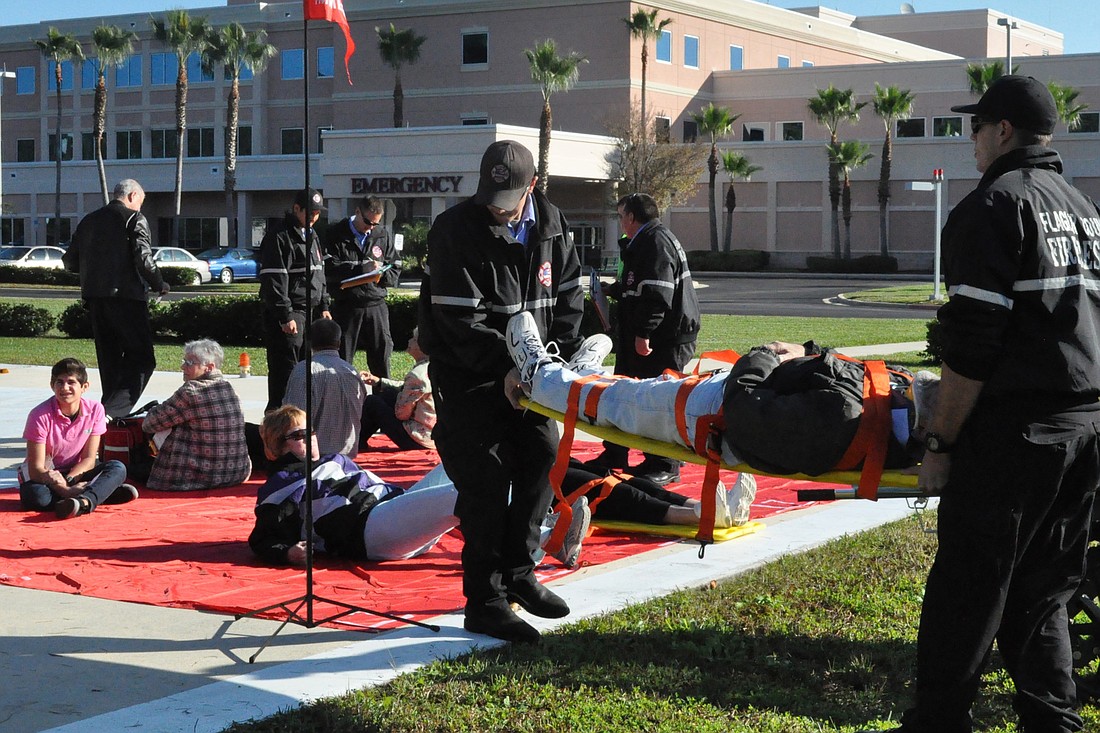- April 23, 2024
-
-
Loading

Loading

Dozens of volunteers lay sprawled on the pavement and the grass in front of Florida Hospital Flagler’s emergency room Wednesday morning, and Jeannie Rodriguez, like some of the others, was supposed to be dead — at least, for the hour or so she spent playing the role of disaster victim at a multi-agency emergency response drill.
“I had mid-sternal injury pain and shortness of breath,” Rodriguez said, showing off an index card that listed a series of symptoms to be read — and reacted to — by local emergency responders during the simulation. “It was a necessary drill. We need to have these drills in order to react in an emergency, in order to react automatically in an emergency,” she said.
Rodriguez and the 25-or-so other volunteers simulated the victims of a “multi-casualty incident” — in this case, the scenario was plane crash at the High Jackers restaurant near the airport — as emergency responders from local agencies including Flagler County Emergency Management, the Flagler County Sheriff’s Office, Flagler County Fire Rescue, Palm Coast Fire Recue, Flagler Beach Fire Rescue and others triaged them for treatment and transport to other hospitals..
About 45 rescue agency personnel evaluated the situation for immediate dangers such as fuel leaks and fire, then began grouping the victims by symptoms, Flagler County Fire Chief Don Petito said, then setting them up for transport to an appropriate treatment facility.
Part of that was Palm Coast Deputy Fire Chief Jerry Forte’s job as the drill’s staging officer.
“Everybody was triaged within 20 minutes. That’s’ pretty good," he said. "All of the patients are now off the streets, and we’re separating them into different sections."
He pointed to four colored tarps — green for minor injures, yellow for more serious ones, red for those who needed immediate help, and black for cases where rescuers expected the patient to die — where rescuers were grouping the victims.
“The general thing is, how do you pick who’s the worst off, and who’s salvageable?” he said. “They have the make the decision, because if you don’t treat the reds” — the victims who need immediate attention —“then the reds and the blacks could die. It’s a hard decision that you have to make.”
Local rescue agencies, and the hospital, take part in training exercises like this yearly, and the process helps identify problems, he said: At a past exercise, radio communication was an issue because there were only two available tactical channels. The drill helped spur the county’s push to the switch to an 800 megahertz system.
“Hopefully, you find your weaknesses,” he said. “ Then you can improve on your weaknesses.”